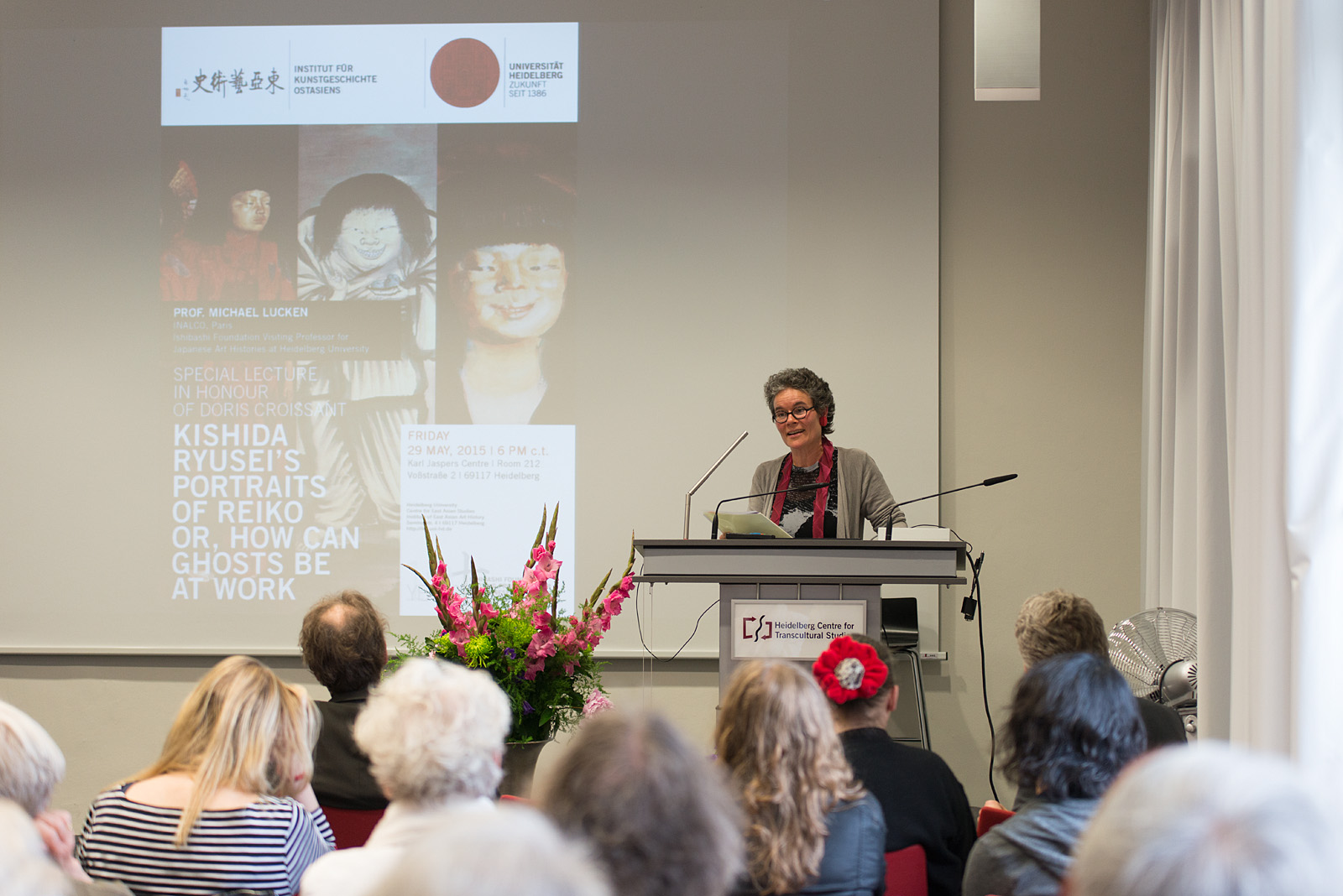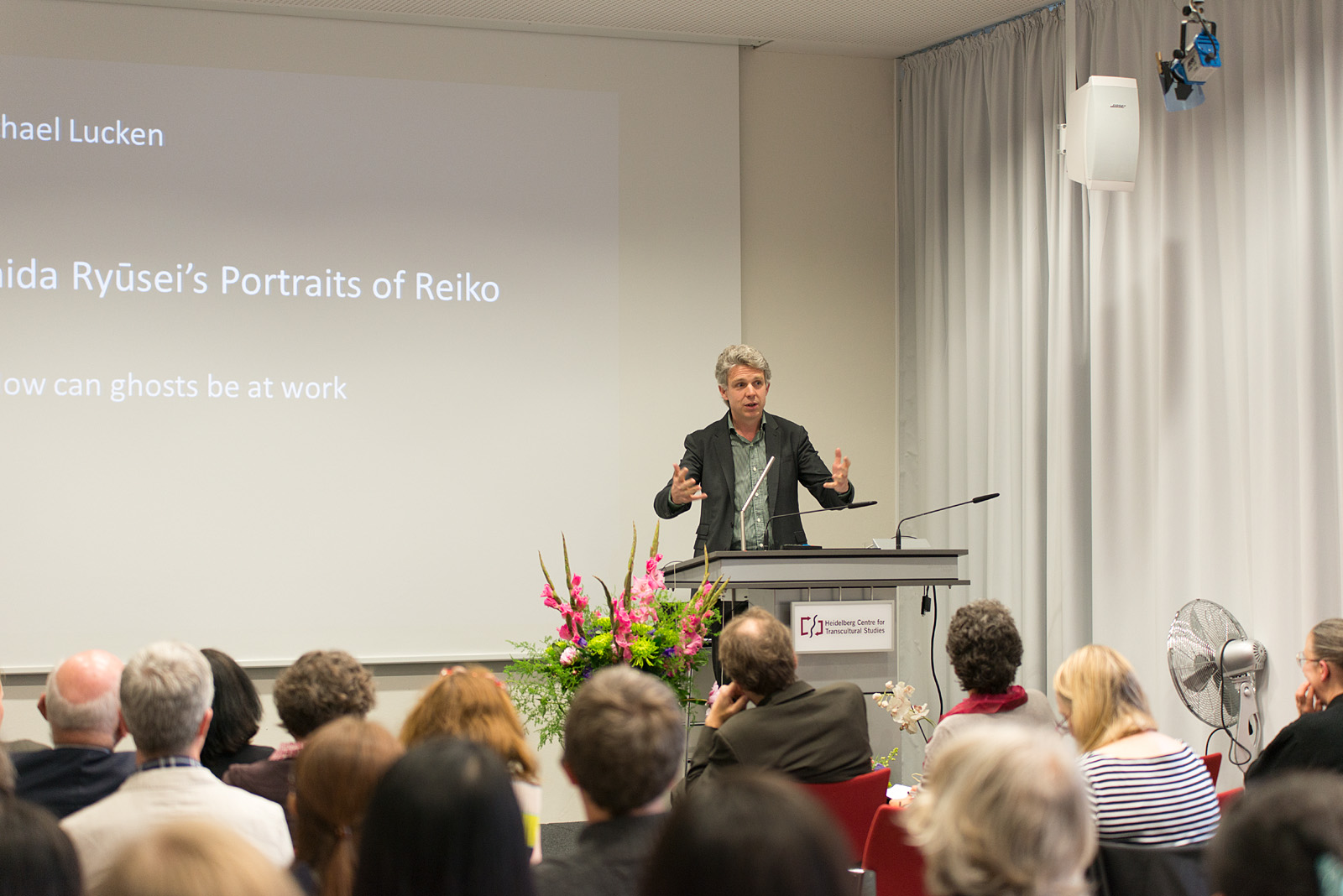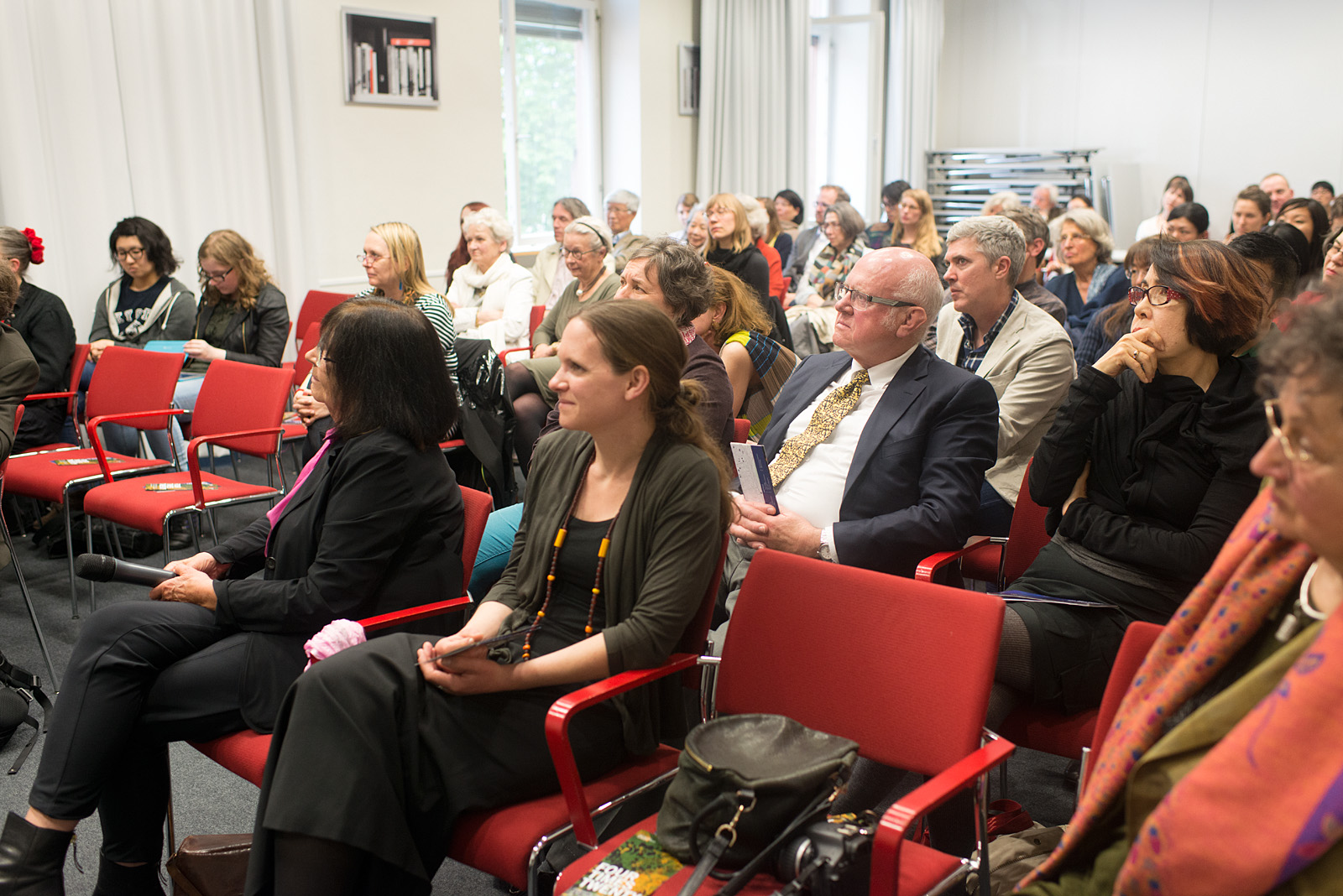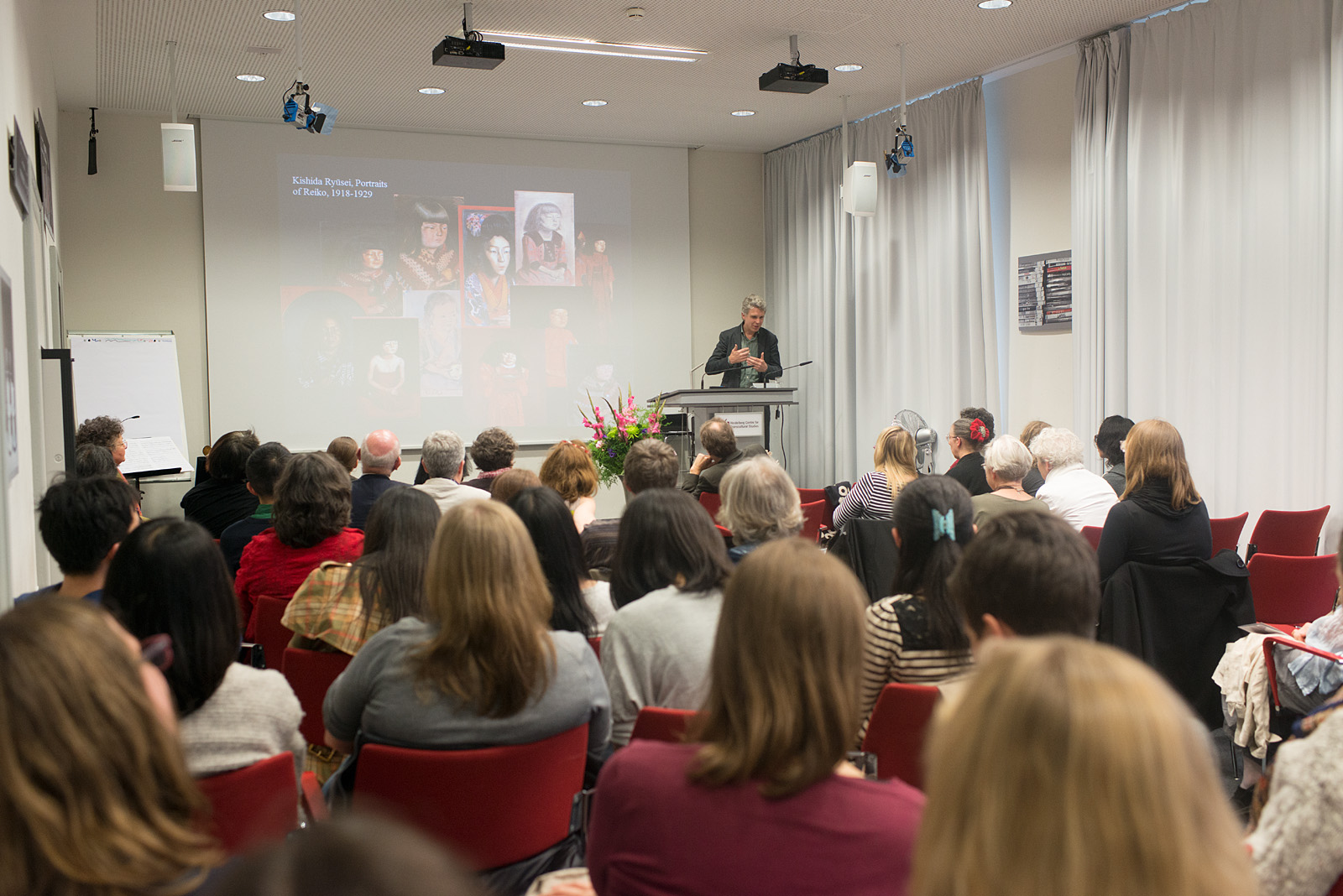Michael Lucken
by Michael Lucken
I lectured six weeks at Heidelberg University, from May 21 to July 5, 2015. It was my first long stay in Germany and I enjoyed very much getting to know better this famous university, its campus, and in particular its library and online facilities.
Coming from the French National Institute for Oriental Languages and Civilizations (Inalco), I realized how easy it is to come from Paris to Heidelberg, and that we definitely should develop French-German programs in the field of Japanese Studies.
I was teaching a “War and Representation” class on Mondays (16:00-18:00) and an “Imitation and Creation in Modern Japanese Art” seminar on Fridays (14:00-16:00). The students (around 10 each) were from different backgrounds (Japanese Studies, East Asian Art History, but also European Art history) and proved to have a good basic understanding of Japanese art and art history. Their reactions were very positive and some of the presentations were of really high academic standard.
The fact that I was teaching in English, a language that is not my mother tongue, brought its own difficulties, but I was delighted to discover how fluent the students were, except for a few of them. It was a great experience and I hope I’ll have someday the opportunity to teach again in English.
Coming from Inalco, I’m used to students who have a certain level of understanding of Japanese language. Though I would have liked sometimes to use more Japanese sources in class, the fact that I had to teach to a general public was in itself a very interesting challenge.
On June 13th (Saturday), we went on a field trip to Clervaux, a small town located in northern Luxemburg. The purpose was to visit the exhibition “The Family of Man”, now on permanent display in the castle. “The Family of Man” is a photography exhibition organized in 1955 by Edward Steichen. It traveled in many countries including Japan twice, attracting millions of visitors. Several Japanese photographers participated in this huge show that reveals a lot about Western visual culture in the Cold-war era, and Japan’s place within Post-war American order. Five students joined the fieldtrip we went to by bus from Heidelberg thanks to the efforts of the undergraduate student Ulrike Walter and the support of IKO.
 On May 29, I had the opportunity and honor to give a lecture in front of Professor Doris Croissant to commemorate her eightieth birthday. Facing a crowded room in Karl Jaspers Centre, I gave a presentation on Kishida Ryūsei’s Portraits of Reiko, a fascinating series of portraits painted between 1915 and 1929.
On May 29, I had the opportunity and honor to give a lecture in front of Professor Doris Croissant to commemorate her eightieth birthday. Facing a crowded room in Karl Jaspers Centre, I gave a presentation on Kishida Ryūsei’s Portraits of Reiko, a fascinating series of portraits painted between 1915 and 1929.
During my stay in Heidelberg, I had the pleasure to attend several lectures and workshops, but also a major Conference on Meiji Japan organized by Prof. Harald Fuess. On these different occasions, I had the chance to exchange with distinguished colleagues and scholars, in particular Prof. Judit Arokay, Prof. Andrea Germer and Dr. Mio Wakita.
I had wonderful working conditions in Heidelberg. Prof. Melanie Trede very kindly offered me to share her office on Karlsplatz, which allowed some stimulating discussions. To be in such a beautiful part of the old town gave me every morning a sense of privilege. I would like to thank Prof. Trede deeply for her invitation: the fact that I was an Ishibashi Foundation program visiting professor will stay in my mind as a great experience.
© Susann Henker, Institut für Kunstgeschichte Ostasiens
Student's assessments
The lecture "The Asia-Pacific War as Representation" was very illuminating as well as interesting. Professor Lucken is always so kind and helpful. I hope I can have more chance to learn from him.
Yajing Wang (MA Student, Chinese Art History)
Before I took the lecture given by Prof. Lucken, I knew little about the Asia-Pacific war except the war itself. The lecture talked about the war memories with various aspects and always offered rich visual evidences and resources. Those images, as mentioned by Prof. Lucken at the very beginning of his lectures, did not merely exist as "evidences" or records of historical events and moments, but they also gave us an opportunity to see, how the history itself was shaped by those images.
Such opinion was always linked to every part of his courses. Thus, when we looked deeply into these images, many more new points of views emerged and a better understanding of the complicated war memories could be reached. What also inspires me a lot was that Prof.
Lucken used various kinds of mediums as resources to talk about the war, including postcards, advertisements, sculptures, films and also the images of city planning.
As we all know, to talk about war is very sophisticated, since it was always associated with politics, economy, society and many other aspects. While seen from the subtopics (like imperial images, or war memory sites) given by Prof. Lucken, each clue was clear organized, thus sufficient inspirations and convincing conclusions were given. I've really learned a lot and appreciated his lectures. Many thanks to him.
Li Ye (MA Student, Chinese Art History)
In my opinion the lecture was very interesting. The issues discussed were very fascinating and they gave a good impression on this time and how people dealt with disasters.
Corinna Philipp
As for my experience regarding Prof. Luckens Seminar:
It definitely left a lasting Impression. The small group and the theme had a certain charm to it, and I learned a lot which I would consider rather important and useful in many regards.
Andreas Römer (BA Student, Japanese Art History)








